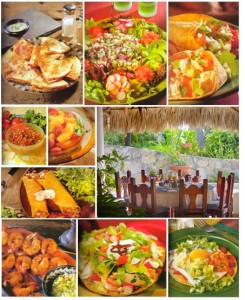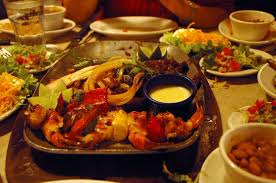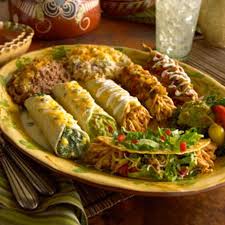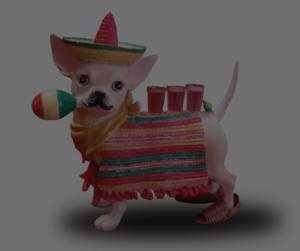
November 25, 2013- Mexican eating patterns are different from ours. The Mexican day hinges on the comida, the midday dinner usually taken in early afternoon but often as late as 4 or 5 o’clock. The timing of meals varies between city and rural dwellers, but for both, the comida with its siesta divides the day into two distinct parts, giving in effect a two-day day. The basic meal pattern starts with desayuno usually coffee and pan dulce, upon rising. Between 10 and 11 o’clock a second breakfast follows, often more substantial, with tortillas, ham and eggs and chiles – this is the almuerzo. If you have this big, late breakfast, you are likely to take the comida late in the afternoon. If it is taken late enough, you are likely to make do with only one more light meal, merienda, which may be café con leche and a sweet. On special occasions there is cena, a light supper of two or three courses that may be served from 8pm to midnight.
For some, the traditional evening meal is a soup or stew. For others, it’s leftovers just as it’s always been in farm homes everywhere, and it’s easier to wrap a tortilla around leftovers than it is to balance them on a cold baking powder biscuit.

Most Canadian/Americans are familiar with the typical dinner menu of soup or salad, a main dish, one to two vegetables, dessert, and a beverage. The typical Mexican comida consists of an appetizer (apertivo), soup (sopa), a rice dish (sopa seca), a cooked vegetable or fish (entrada), the main course (platillo fuerte) usually accompanied by a salad (ensalada), beans (frijoles), dessert (postre) and a beverage (bebida).
By comparison it looks like a very heavy meal. Remember that it is taken at late midday and is intended to be lingered over and is also followed by a siesta.

The cooking and serving customs in Mexico grew out of a communal way of life; each person had working responsibilities to the entire group. Usually a number of women had the responsibility of cooking for the other members; they were able to spend their entire day preparing the masa, chopping, simmering and baking. Even today in Mexico, more than one woman usually manages the cooking for the family. The middleclass household has at least one woman hired full time for the kitchen. Those households of lesser means are usually an extended family, so that even if one woman is employed outside of the home, there are others at home to do the cooking and serving.
*Credit “Adventures in Mexican Cooking” by Ortho Books


